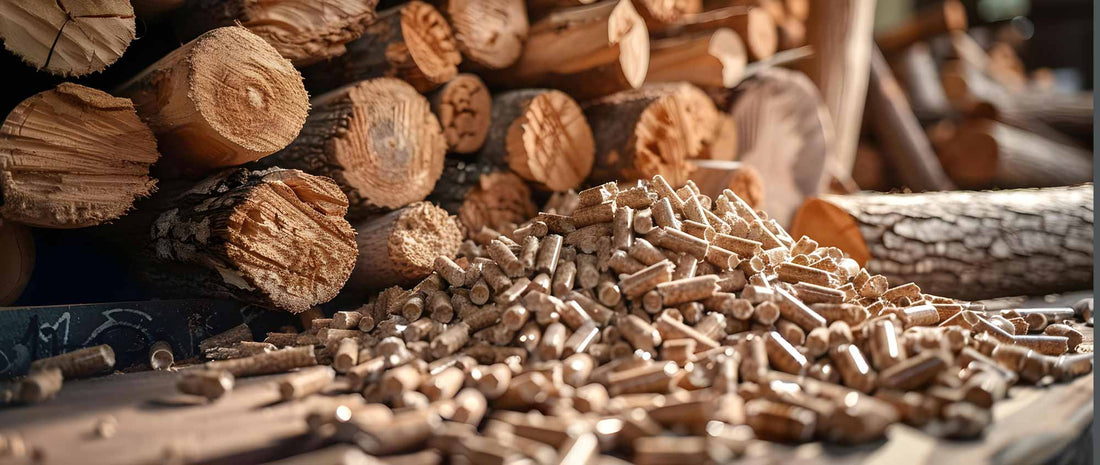
The Real Guide to Pellet Flavors: How Wood Changes the Game
Share
If you’re cooking on a pellet grill, the wood you burn is just as important as the meat you put on it. Every pellet flavor burns a little different, tastes a little different, and brings its own attitude to your cook.
The wood pellets you use should be made the right way: 100% pure hardwood, no fillers, no oils, no artificial nonsense. The goal isn’t to mask your food with smoke; it’s to enhance it. Here’s how each wood flavor plays out, when to use it, and why it matters.
Hickory – The Classic Backbone
If barbecue had a signature scent, it’d be hickory. It’s strong, bold, and unmistakably Southern. Hickory gives you that deep, bacon-like smoke flavor that works perfectly with ribs, pork shoulder, brisket, and just about any cut that needs to stand up to a heavier smoke.
Use it when:
You’re going for that traditional BBQ flavor, like competition brisket on the Grid Iron or a slab of ribs that tastes like it came straight out of a Texas pit.
Pro Tip: Hickory can be intense for lighter meats, so if you’re smoking poultry or fish, try cutting it with oak or fruit wood.
Pecan – Smooth and Subtle
Pecan is the gentleman’s hickory. Same family, less aggression. It delivers a rich, nutty flavor that adds warmth without overpowering your meat. Pecan’s a crowd-pleaser that pairs well with chicken, pork, and even vegetables.
Use it when:
You want a balanced, slightly sweet smoke that enhances without taking over. Perfect for weekend cooks on the Grand Slam when you’re feeding a crowd and need consistency.
Apple – Sweet and Clean
Applewood smoke is light, clean, and subtly sweet. It’s ideal for pork, poultry, and seafood. It adds color to your meat and gives that gentle fruity note that’s hard to beat for presentation and flavor balance.
Use it when:
You’re doing a whole bird, pork tenderloin, or smoked cheese. Applewood shines when finesse matters more than brute force.
Pro Tip: Mix apple with hickory for a balanced sweet-and-smoky combo.
Mesquite – Bold and Untamed
Mesquite doesn’t whisper. It roars. It burns hot, fast, and delivers a distinctive earthy flavor that Texans swear by. It’s unbeatable for beef, especially steaks, brisket, and burgers.
Use it when:
You want a sharp, smoky kick that grabs attention. Mesquite brings that authentic, rugged BBQ vibe that demands respect.
Pro Tip: Go easy. Mesquite can get bitter if you overdo it on long cooks. Mix it with oak for balance.
Cherry – The Finisher
Cherry adds a beautiful mahogany color and a mild, sweet smoke. It doesn’t overpower, but it does make everything look and taste better. It’s perfect for chicken, ribs, and fish, or for blending with stronger woods like hickory or mesquite.
Use it when:
You want your meat to look competition-ready and taste refined. Cherry smoke gives you that perfect finishing touch.
Oak – The Reliable Workhorse
Oak is steady, consistent, and versatile. It burns evenly and produces a medium smoke flavor that complements just about anything you throw on the grates.
Use it when:
You’re cooking a variety of meats or need a base for blends. Oak is your go-to for long cooks where steady temps matter most, like overnight briskets on the Grid Iron.
Blending for the Perfect Flavor
The best pitmasters don’t just pick one. They mix and match.
- Oak + Hickory: Classic BBQ blend.
- Apple + Pecan: Smooth and sweet for pork or chicken.
- Mesquite + Cherry: Bold smoke with a hint of color and sweetness.
Experiment until you find your signature combo. Every cook, every cut, and every pit behaves differently. That’s the art of it.
The Takeaway
Wood pellets are more than fuel. They’re seasoning. The right mix can turn a good cook into a great one. Whether you’re running the Grid Iron, the Grand Slam, or dialing in temps with our Accessories, don’t overlook your wood choice.
Real BBQ isn’t about shortcuts. It’s about precision, patience, and fire. Pick the right pellets and let the smoke do the talking.


